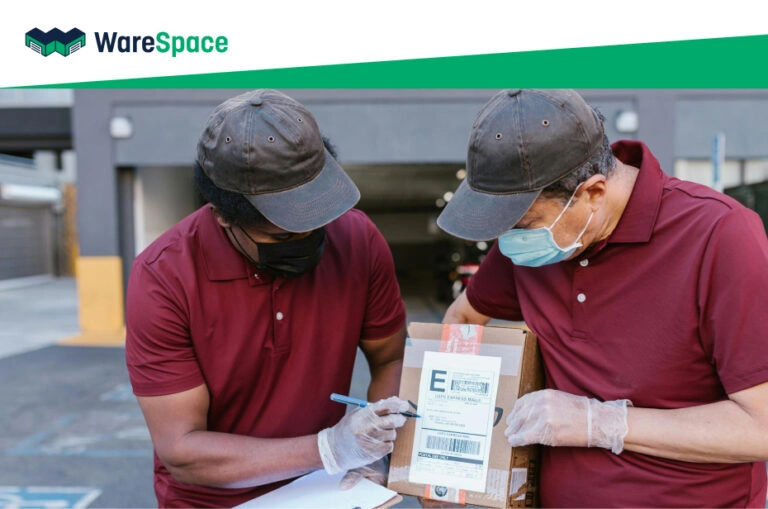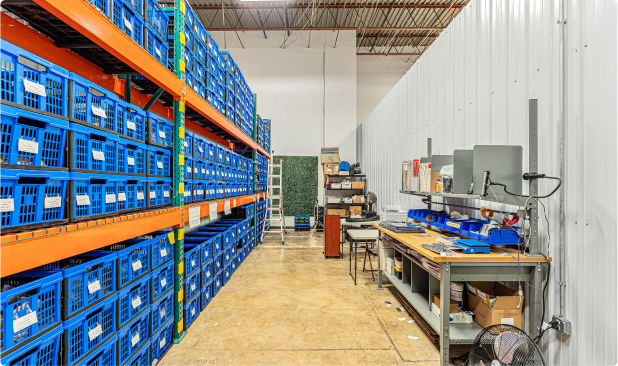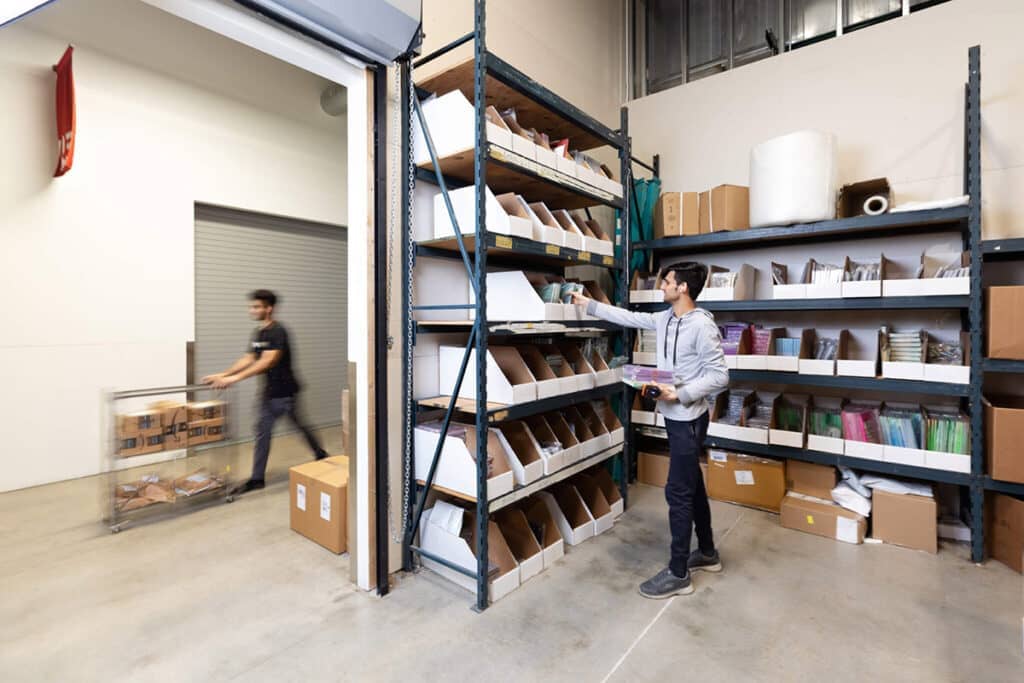Shipping labels are an essential aspect of the logistics process, ensuring packages are routed and delivered correctly. Whether you’re running a small business or handling large volumes of shipments, understanding how shipping labels work and how to print them ensures your packages arrive at your customers efficiently and accurately.
In this post, we will cover:
- What shipping labels are and why they are important.
- The types of shipping labels and when you may need customized options.
- Key elements of a shipping label and best practices for labeling packages.
- How to print your own shipping labels and customize them for your business.
What Are Shipping Labels?
Shipping labels are critical for tracking and delivering packages to their intended destination. They contain important information such as the recipient’s address, the sender’s details, package weight, and tracking numbers. This information allows shipping carriers like UPS, FedEx, and USPS to process and deliver packages efficiently. Without a proper shipping label, packages can get lost, misrouted, or delayed.
Shipping labels contain several key components: the recipient’s address, the sender’s address (useful for returns), a barcode that enables tracking through the carrier’s system, a tracking number, the package weight required for proper pricing and handling, and a shipping class (e.g. standard or expedited) that determines delivery speed.
Types of Shipping Labels
There are several types of shipping labels available, depending on the needs of the business:
- Standard Shipping Labels: These include the basic information needed for delivery and are used for most domestic and international shipments.
- International Shipping Labels: These labels include additional customs information and documentation for packages crossing international borders.
- Customized Shipping Labels: Businesses can add logos, brand colors, or messages to enhance their packaging and promote brand recognition.
Businesses often use customized shipping labels when they want to stand out from competitors and deliver a branded customer experience. Custom labels can include personalized details like a company logo or a thank-you message for customers, which creates a unique unboxing experience.
Understanding Barcodes and Tracking Numbers
Barcodes and tracking numbers play a crucial role in the shipping process. Each shipping label has a unique barcode and corresponding tracking number that allows carriers to monitor the package’s journey from the sender to the recipient.
Barcodes streamline the shipping process by enabling automated systems to scan packages at various points in the delivery chain, updating the tracking information in real time. This ensures that both the sender and recipient can follow the package’s progress and estimate the delivery time.
The tracking number, tied to the barcode, provides updates at each checkpoint, allowing businesses and customers to know the package’s current location, any potential delays, and the expected delivery date. This system not only boosts efficiency but also improves customer satisfaction by providing transparency throughout the shipping process.
How to Label a Shipping Box Correctly
The type of shipping label you choose depends on several factors like package size, weight, and destination. For instance, heavier packages may require different handling instructions, while international shipments need labels that meet customs requirements. Custom labels and packaging might also be worth considering to deliver a more unique unboxing experience.
When applying a shipping label, it’s important to place it on a flat surface of the box, away from seams or edges where it could get damaged or be hard to scan. The label should always be easy to read and unobstructed, ensuring that barcodes can be scanned quickly.
Whilst each shipping carrier follows the same general guidelines for packaging labels—such as including the recipient’s and sender’s full address, package weight and dimensions, and tracking barcode—there are some carrier-specific recommendations to keep in mind:
- USPS: Ensure the label contains information on the shipping class, such as Priority Mail, First-Class Mail, or Media Mail, and place it on the largest flat surface of the box.
- UPS: Labels should contain the service type (e.g., Ground, 2-Day). UPS recommends thermal printing to ensure barcodes remain scannable throughout the shipping process.
- FedEx: Apply shipping labels to the largest flat side of the box for optimal scanning.
Common Mistakes to Avoid:
- Placing labels over box seams or corners.
- Covering barcodes with tape, which can affect scanning.
- Using labels that are too small or unclear.
- When re-labeling a package, not removing any old labels which can confuse the system.
How to Print Your Own Shipping Labels
There are several ways to print your own shipping labels, including using carrier print shops like The UPS Store, or leveraging online tools like Stamps.com and Shippo. You can also invest in label printers that are specifically designed to produce clear, scannable labels.
Benefits of Printing Your Own Labels:
- Cost Savings: Printing labels at home or in your office can save on trips to the post office or shipping center and reduce the cost per label.
- Convenience: You can print labels on demand, reducing delays in shipping.
- Customization: Many online tools allow you to create custom labels that include your company’s branding.
Step-by-Step Guide to Printing Shipping Labels
- Choose a Label Paper: Select adhesive label paper designed for shipping or use standard paper with clear packing tape.
- Set Up a Printer: Ensure your printer settings match the label size and that ink or toner levels are adequate, and consider investing in a thermal-printer.
- Generate the Label: Visit carrier websites or platforms like Shippo to generate and print the label.
- Print and Apply: Print the label and attach it to the package securely, making sure it’s flat, easy to scan, and away from any edges or creases.
Customizing Shipping Labels for Your Business
Customized shipping labels and packaging can boost your brand’s visibility and create a one-of-a-kind experience. By adding logos, brand colors, and custom messages to your labels, you create a memorable unboxing experience for your customers, which can increase repeat business and help spread positive word-of-mouth.
There are several tools available for creating custom labels, such as Canva, Adobe Spark, or specific shipping platforms like Shippo and Stamps.com. These tools allow you to add personalized elements like logos, colors, and unique messages to make your packages stand out. Depending on if you have the necessary printer and paper, you can either print out custom labels yourself, or order them online.
Common Questions About Shipping Labels
Does the Name on Shipping Address Matter?
Yes, the name on the shipping address can be important for delivery. Carriers typically rely on the address for delivery, but mismatches or incorrect names frequently lead to the carrier returning the package to the sender. It’s important to ensure that the recipient’s full legal name matches what’s listed on the shipping label, and if not inform the shipping carrier as soon as possible.
Can I Print My Own Shipping Label?
Yes, printing your own shipping labels is easy and cost-effective. Many carriers allow you to generate and print labels directly from their websites, and third-party tools offer additional customization options. Always ensure the label is clear and scannable, and that it follows any carrier-specific rules. It’s essential to ensure that all information on the label is accurate, including the recipient’s address, package weight, and service type, as incorrect details can lead to delivery delays or fines from carriers.
How to Ensure a Successful Delivery
To guarantee successful delivery, always double-check the address, weight, and shipping class before printing your labels. Proper label placement is also essential to ensure the package is processed and delivered without delays.




